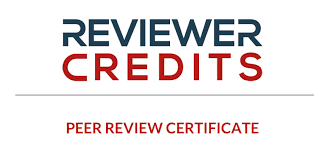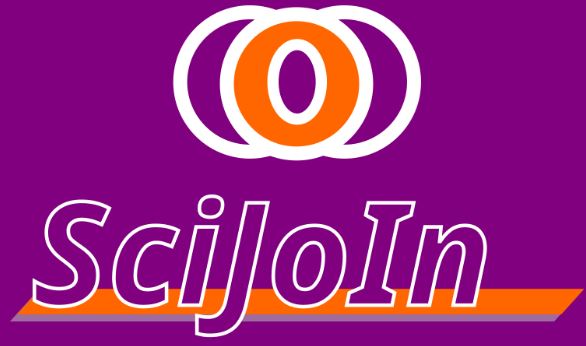Call Papers
Fees Waived for Manuscripts Submitted by dezember 31, 2025 !
Plagiarism detection
All new article submissions to the ETS Journal will undergo a similarity check using iThenticate/Turnitin software. Editors reserve the right to conduct additional similarity checks at any stage of the editorial process, including during review and after publication, using the same or alternative tools.
Publication Frequency
The Engineering & Technology Scientific Journal have a continuous submission system and published sixmonthly (Two issues a year). All papers are published as soon as they have been accepted, by adding them to the "Current Issue” section with DOI.
Open Access Policy
This is an open access journal which means that all content is freely available without charge to the user or his/her institution. Users are allowed to read, download, copy, distribute, print, search, or link to the full texts of the articles, or use them for any other lawful purpose, without asking prior permission from the publisher or the author. This is in accordance with the BOAI definition of open access.
Business Model
The Engineering & Technology Scientific Journal is a complete academic publishing portal, run by active researchers, that enables the publication of a journal. The service is organized around two key principles: openness and quality. Open Access is free for readers and authors, decoupling the scientific and financial issues. The The Engineering & Technology Scientific Journal basis. We are thankful to: PKP – for providing Open Journal System platform.
Ethical Policy
All research articles published by the Engineering & Technology Scientific Journal are subject to a rigorous ethical standards. The Open Knowledge Journal endorses the Code of Conduct of the Committee on Publication Ethics (COPE), as well as the COPE International Standards for Editors and Authors Guidelines.
Editorship — The Engineering & Technology Scientific Journal strongly support the mission of the COPE Code of Conduct and Best Practice Guidelines for Journal Editors.
Authorship — All those who have made a significant contribution should be given chance to be cited as authors. Other individuals who have contributed to the work should be acknowledged. Articles should include a full list of the current institutional affiliations of all authors, both academic and corporate.
Plagiarism — The section editor of the assigned article will immediately screen all articles submitted for publication in the journal. All submissions we receive are checked by using plagiarism detection online available tools such as Turnitin. Corrections and retractions All authors have an obligation to inform and corporate with journal editors to provide prompt retractions or correction of errors in published works.
The journal will issue retractions if:
The journal will issue errata if:
Other forms of misconduct include failure to meet clear ethical and legal requirements such as misrepresentation of interests, breach of confidentiality, lack of informed consent and abuse of research subjects or materials. Misconduct also includes improper dealing with infringements, such as attempts to cover up misconduct and reprisals on whistleblowers. The primary responsibility for handling research misconduct is in the hands of those who employ the researchers. If a possible misconduct is brought to our attention, we will seek advice from the referees and the Editorial Board. If there is the evidence, we will resolve the matter by appropriate corrections by refusing to consider an author's future work, for a given period, and by contacting affected authors and editors of other journals.
Conflict of Interest
The Engineering & Technology Scientific Journal requires all authors and reviewers to declare any conflicts of interest that may be inherent in their submissions. Conflict of interest for a given manuscript exists when a participant in the peer review and publication process – author, reviewer, or editor – has ties to activities that could inappropriately influence his or her judgment, whether or not judgment is in fact affected. Financial relationships with industry, for example, through employment, consultancies, stock ownership, honoraria, expert testimony, either directly or through immediate family, are usually considered to be the most important conflicts of interest. However, conflicts can occur for other reasons, such as personal relationships, academic competition, and intellectual passion.
Editors — May request that authors of a study funded by an agency with a proprietary or financial interest in the outcome sign a statement, such as "I had full access to all of the data in this study and I take complete responsibility for the integrity of the data and the accuracy of the data analysis."
Authors — When they submit a manuscript, whether an article or a letter, authors are responsible for recognizing and disclosing financial and other conflicts of interest that might bias their work. They should acknowledge in the manuscript all financial support for the work and other financial or personal connections to the work.
Reviewers — External peer reviewers should disclose to editors any conflicts of interest that could bias their opinions of the manuscript, and they should disqualify themselves from reviewing specific manuscripts if they believe it appropriate. The editors must be made aware of reviewers’ conflicts of interest to interpret the reviews and judge for themselves whether the reviewer should be disqualified. Reviewers should not use knowledge of the work, before its publication, to further their own interests.
Copyright and Licensing
Authors retain the copyright of the article. Authors grant Engineering & Technology Scientific Journal an irrevocable non-exclusive license to publish the article electronically and in print format and to identify itself as the original publisher. Authors can grant any third party the right to use the article freely as long as its original authors and citation details are identified. The article is distributed under the Creative Commons Attribution 4.0 License. Unless otherwise stated, associated published material is distributed under the same license: Creative Commons Attribution 4.0 License You are free to:
Under the following conditions:
Repository policy
The Engineering & Technology Scientific Journal allows all versions ( Submitted version, Accepted version, Published version (Version of Record) to be deposited in an institutional or another repository of the author’s choice without embargo.
| POINTS OF INTEREST |
|---|
| Register |
| About Journal |
| Crossref DOI |
| Editorial Team |
| Publishing Process |
| Model Manuscript |


Fees Waived for Manuscripts Submitted by dezember 31, 2025 !
Engineering & Technology Scientific Journal is an annual continuous-flow journal publishing original and unpublished works related to Engineering, Technology, Exact and Earth Sciences.
All articles published in our journal have open access and are available free of charge online, immediately after publication.
There are no subscription, submission or article processing fees.

Engineering & Technology Scientific Journal is licensed under a Creative Commons Attribution-NonCommercial 4.0 International License.
Disclaimer: Articles published by Engineering & Technology Scientific Journal have been pre-viewed and authenticated by the Authors before publication. The Journal, Editor and the editorial board are not entitled or liable to either justify or responsible for inaccurate and misleading data if any. It is the sole responsibility of the Author concerned. Read our Plagiarism Policy and use of this site signifies your agreement to the Terms of Use.
Department of Engineering - Faculty of Engineering and Sciences (UNESP - Campus de Rosana).
Avenida Dos Barrageiros, 1881 - Primavera, Rosana - SP, 19274-000.
